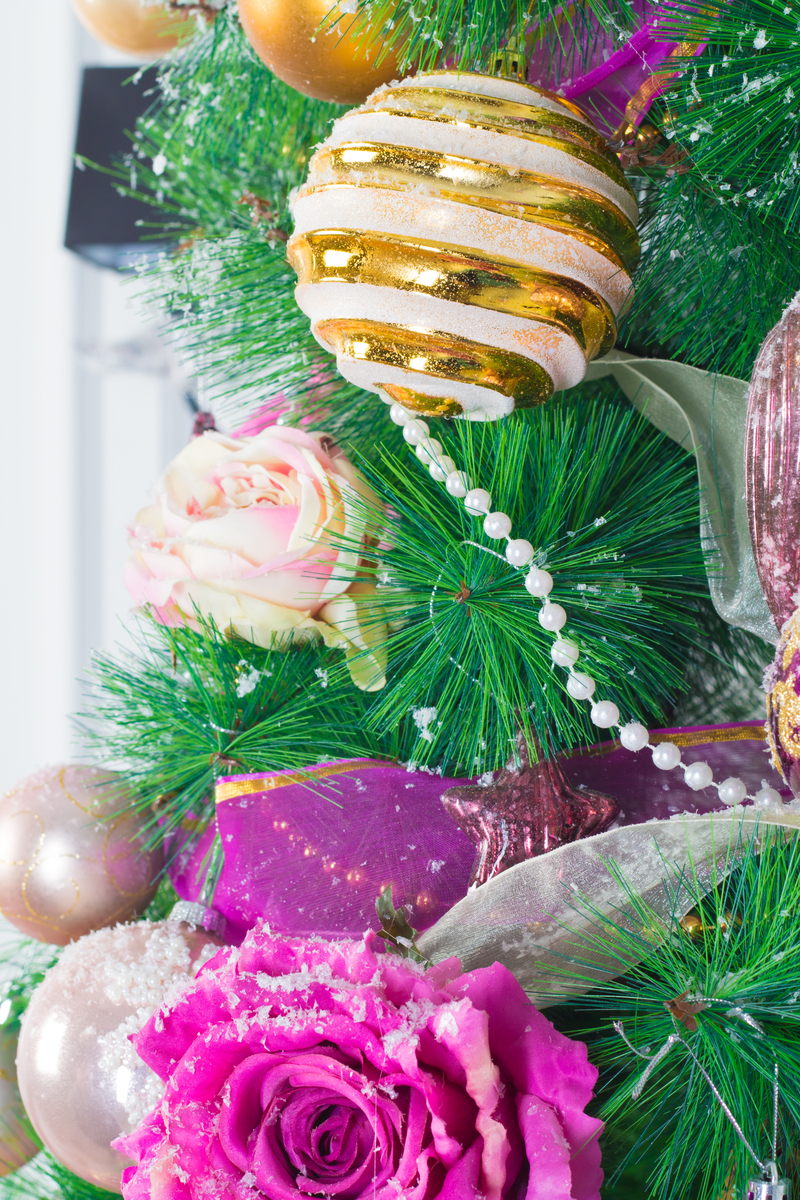Poinsettia Care Essentials for Extended Beauty
Posted on 14/08/2025
Poinsettia Care Essentials for Extended Beauty: The Ultimate Guide
The vibrant poinsettia is synonymous with the holiday season, but did you know this stunning plant can thrive long after festivities have ended? Mastering poinsettia care is the secret to extending its beauty, keeping its brilliant bracts bright, and ensuring it remains a focal point in your home throughout the year. In this comprehensive guide, discover everything you need to know to nurture your poinsettia so it remains healthy and radiant for months--and even years--to come.

Why Poinsettias Are More Than a Holiday Plant
Often associated with Christmas, the poinsettia (Euphorbia pulcherrima) is native to Mexico and Central America. While its red, pink, or white bracts look like festive petals, they're actually modified leaves. Proper poinsettia plant care means these dazzling displays can last well beyond the holidays, providing stunning indoor color and vibrant greenery.
Understanding Your Poinsettia's Needs
To achieve lasting beauty, it's crucial to understand what your *poinsettia* needs for optimal health. Taking the correct steps right from the start will ensure that your plant not only survives, but thrives.
Light
- Bright, indirect light is essential for extended poinsettia beauty.
- Aim for at least six hours of filtered sunlight each day.
- Avoid direct sun, which can scorch the bracts and leaves.
- If natural light is limited, consider using a grow light to supplement.
Temperature
- Maintain temperatures between 65?F-75?F (18?C-24?C) during the day.
- Night temperatures should not drop below 60?F (15?C).
- Avoid cold drafts, excessive heat, or sudden temperature changes; these stress your poinsettia and reduce its longevity.
- Keep away from windows and doors that open frequently in winter, as cold bursts can damage the plant.
Watering your Poinsettia
- Overwatering is the most common mistake in poinsettia maintenance.
- Water your plant when the top inch of soil feels dry to the touch--usually once a week.
- Never let the pot sit in standing water. Ensure the container has drainage holes.
- Use lukewarm water for best results to avoid shocking the roots.
Humidity and Air Quality
- Poinsettias prefer moderate humidity (50-60%).
- If indoor air is dry (common in winter), use a humidifier or mist the plant occasionally.
- Keep the plant away from heating vents or fireplaces as these will dry out the foliage.
Container and Soil Setup for Poinsettia Plants
The right container and soil are foundational to poinsettia longevity and ongoing vibrancy.
Choosing the Right Pot
- Ensure pots have ample drainage holes to prevent root rot.
- Repot only if your poinsettia has outgrown its current container or the soil is depleted.
- If repotting, do so after the holiday blooming period, usually in late winter or early spring.
Optimal Soil Mix
- Well-draining, peat-based potting soil is ideal for extended poinsettia health.
- A mixture combining peat moss, perlite, and a small amount of compost promotes strong roots.
- Avoid heavy garden soils which may suffocate roots and retain too much moisture.
Fertilization for Lasting Poinsettia Color
Feeding your poinsettia at the right time will replenish nutrients and keep bracts vibrant.
- Do not fertilize while your poinsettia is in full bloom from November to late December.
- Start fertilizing in late winter or early spring, when new growth appears.
- Use a balanced, water-soluble houseplant fertilizer (20-20-20) diluted to half strength every four to six weeks.
- Avoid over-fertilization which can burn the roots and damage leaves.
Common Poinsettia Problems and Solutions
Yellowing Leaves
- Cause: Overwatering, underwatering, or temperature stress.
- Solution: Adjust your watering schedule and check for cold drafts.
Leaf Drop
- Cause: Sudden changes in environment or insufficient light.
- Solution: Find a stable, well-lit spot and avoid moving the plant frequently.
Browning or Scorched Bracts
- Cause: Direct sunlight, dry air, or extremes of temperature.
- Solution: Provide filtered light and maintain consistent indoor conditions.
Pests
- Common pests: Whiteflies, spider mites, and aphids may occasionally bother ponderetta plants.
- Solution: Use a mild insecticidal soap or rinse the leaves with lukewarm water. Inspect regularly for signs of infestation.
Extending Poinsettia Beauty Beyond the Holidays
While the traditional holiday poinsettia is a winter delight, your plant's lifecycle doesn't have to end after New Year's. With attentive care, a poinsettia can become a year-round houseplant. Here's how to guide your poinsettia through the seasons for ongoing brilliance.
January - March: Recovery and Maintenance
- Continue regular watering and provide bright, indirect light.
- Remove faded bracts and leaves to keep the plant tidy.
- Avoid fertilizing until late winter or as new growth appears.
April - May: Pruning and Repotting
- Prune your poinsettia back to 4-6 inches from the soil to encourage bushier growth.
- Repot if the root system is crowded or the soil is old and depleted.
June - August: Growing Season
- Move your plant outdoors if daytime temperatures stay above 60?F (15?C)--choose a shaded, sheltered spot.
- Fertilize monthly with a balanced product.
- Continue to water consistently, but avoid soggy conditions.
September - October: Preparing for Rebloom
- Bring the poinsettia indoors before night temperatures fall below 55?F (13?C).
- From late September, initiate the "dark treatment" if you want the plant to rebloom for the holidays:
- Each evening, place your plant in complete darkness (a closet or box) for 14-16 hours for 8-10 weeks.
- Return it to bright, indirect light during the day.
- This process triggers the colorful bracts to form for December display.
Poinsettia Safety: Myths and Facts
A common myth is that poinsettias are highly toxic. In reality, they are only mildly irritating if ingested, and severe reactions are rare. However:
- Keep poinsettias out of reach of pets and children, who may be sensitive to the sap.
- Gloves may be worn when pruning to avoid skin irritation.
- Always wash hands after handling poinsettias if you have sensitive skin.
Decorating with Poinsettias Year-Round
A thriving poinsettia can liven up your home long after the holidays. Here are some creative ways to enjoy its beauty every season:
- Table centerpieces: Mix with other houseplants for an eye-catching display.
- Potted arrangements: Pair with greenery in attractive planters or baskets.
- For outdoor porches or patios, use poinsettias as accent plants in summer (avoid direct sun and excessive rain).
- Experiment with different color varieties such as cream, pink, and marbled forms for year-round freshness.

Frequently Asked Questions
1. How long do poinsettias last indoors?
With correct care, a poinsettia can retain its color and leaves for several months. By following poinsettia care essentials, it's possible to keep the plant healthy and vibrant year after year.
2. Why are my poinsettia's leaves falling off?
Leaf drop is usually a sign of stress from temperature fluctuations, drafts, or improper watering. Stabilize the environment and check for wet or dry soil.
3. Can I plant my poinsettia outdoors?
If you live in a frost-free climate (USDA Zones 9-11), you can plant poinsettias outside. Choose a protected, partially shaded location and ensure well-draining soil.
Conclusion: Achieving Extended Beauty with the Perfect Poinsettia Care
The poinsettia is far more than a fleeting holiday bloom--it's a vibrant, living decoration that rewards proper care with months or even years of color. By following these poinsettia care essentials--including optimal light, temperature, humidity, watering, and fertilization--you'll not only ensure your plant's health and beauty but also enjoy its festive charm in every season. Treat your poinsettia to attentive, informed care, and let its brilliant display become a year-round testament to your gardening know-how.
For more tips on long-lasting poinsettia beauty and plant care, subscribe to our updates or explore our extensive guides on seasonal houseplants!
Latest Posts
Mastering the Basics of Exceptional Orchid Care
Poinsettia Care Essentials for Extended Beauty
3 Quick Techniques to Preserve Your Flowers Effortlessly





